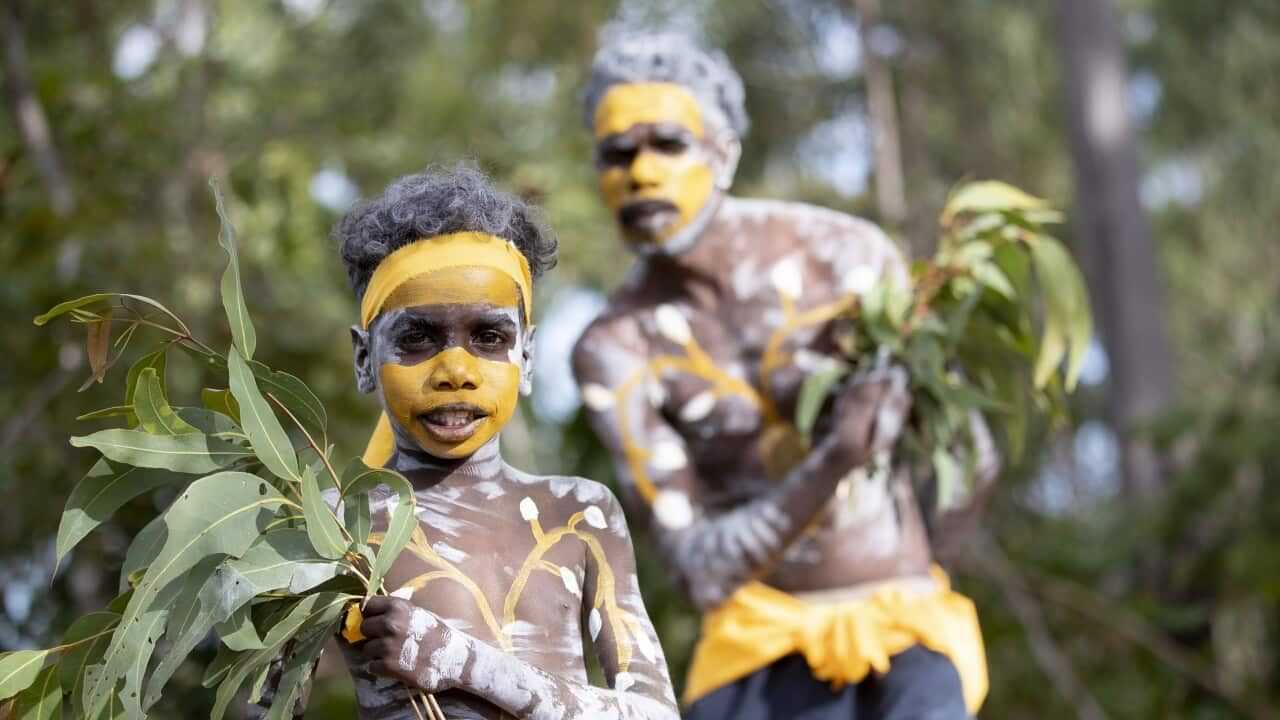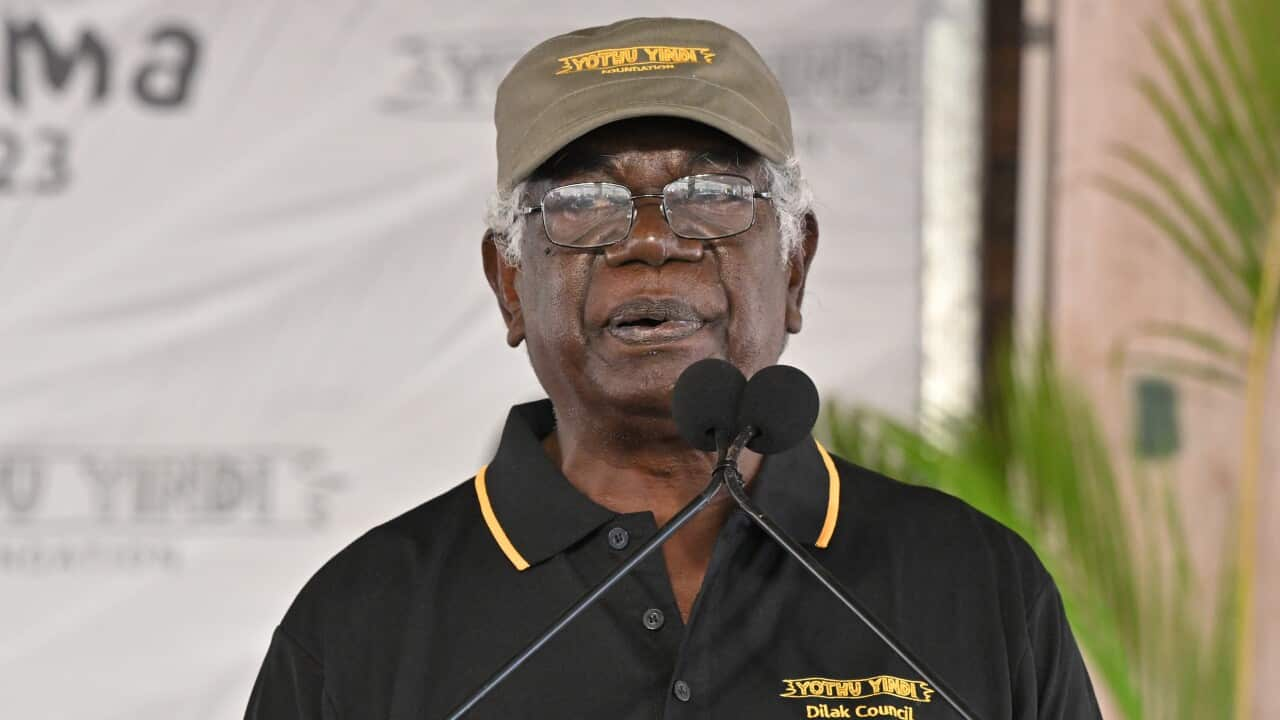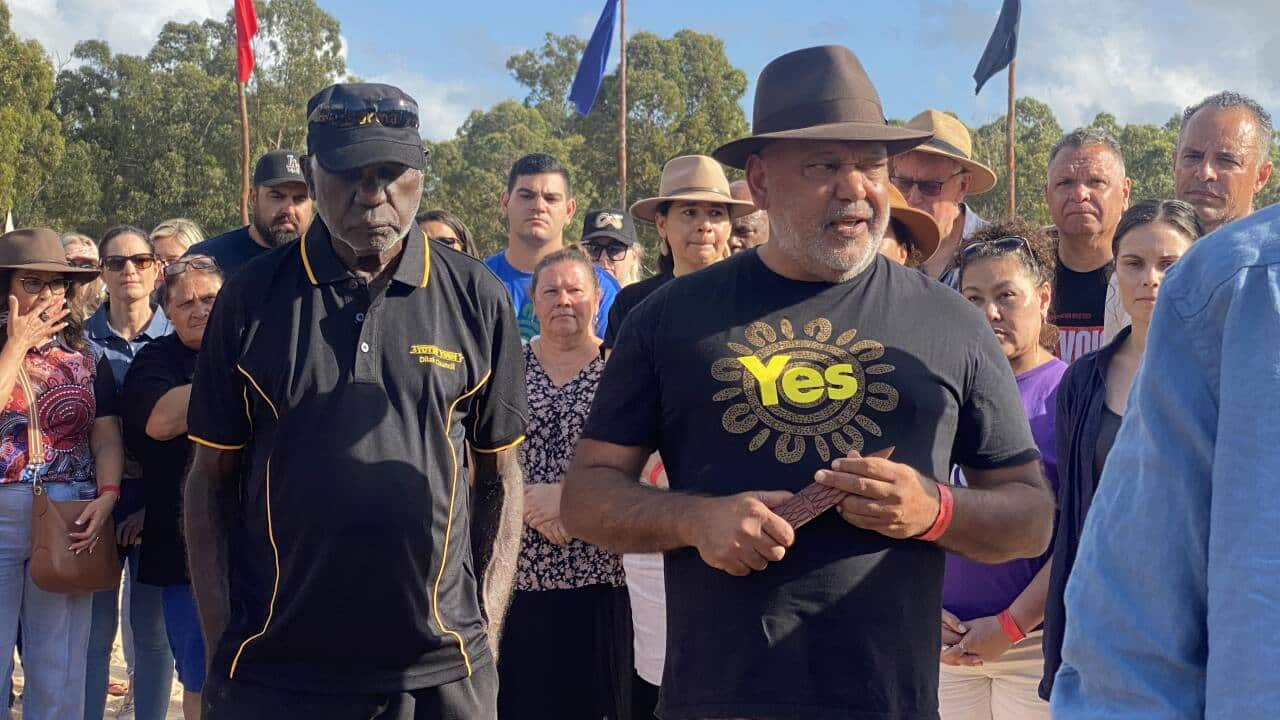Six years ago Rio Tinto announced the closure of the aluminium and bauxite mine on the Gove Peninsula.
Now, the communities of North East Arnhem Land are pulling together to build a strong economic base to sustain their livelihood on Country post-mining.
READ MORE

What is Garma and how did it begin?
How mining began at Gove
Mining began in Gove in 1968. The company, Nabalco, leased the 300 square kilometres of the Arnhem Land Reserve from the government without consultation with Yolngu.
In 1971, Yolngu leaders petitioned the government in the landmark Gove Land Rights court case about mining activity commencing without consent. This led to the Commonwealth Aboriginal Land Rights Act of 1976.
Under the act, all of East Arnhem Land from the mine site to township areas became freehold Aboriginal land.
The leases are held by the Northern Land Council (NLC), and when they expire in 2053 the land will be given to the Arnhem Aboriginal Land Trust.
But, when mining activity ends, the land will be owned entirely by the Traditional Owners - the future of their Country lies with them.
In June of 2011, Yolngu signed an agreement with Rio Tinto to see mining royalties paid to the Gumatj Future Fund and Rirratjingu Aboriginal Corporation.
Speaking at 'The Future Economy of North East Arnhem Land' panel on Saturday, senior Gumatj leader Djawa Yunupingu said the agreement "opened up doors" for Yolngu.
"We were getting more of our people into the workplace . . . but signing the agreement was the best thing that ever happened to our people," he said.
"The former mining company wouldn't let us form that agreement."
Yolngu went 43 years without a formal agreement with a mining company operating on their Country.
Businesses building the post-mining economy
As the Gove mine begins to shut down, Yolngu are looking to the future.
In 2019, Gumatj Corporation, Rirratjingu Aboriginal Corporation, the NLC, Rio Tinto, the Northern Territory Government and the Commonwealth Government created the Gove Peninsula Futures Reference Group to support the survival of Nhunulunbuy and Gove Peninsula post-mining.
"Mine close all over the world, but when a mine closes there are effects. There is no difference here, we will see major effects in Arnhem Land," said CEO of Gumatj Corporation Klaus Helms.
"We have a window now to prepare for this . . . we are looking to the future . . . but all of this is a Traditional Owner agreement, it is the Traditional Owners telling us where they want to go."
Mr Helms emphasised the need to establish post-mining economics in the community.
"Mining royalties have played a crucial part for Traditional Owners to establish non-related mining industries," he said.
"But what we are trying to do now, is to look at what we can utilise from the mine . . . we want to keep the good, whatever will be good use to the economy."
The mine, Gove Alumina Refinery and the associated Residue Disposal Area, is currently the largest environmental rehabilitation site in the southern hemisphere according to Rio Tinto CEO Kellie Parker.
"It's the equivalent of dismantling three Sydney Harbour Bridges," she said on the panel.
Rio Tinto has been working to help establish the economy after its exit, including working with Traditional Owners to install solar power on-site, and dedicated funding to the expansion of community services including education services and a cyclone shelter.

Rio Tinto CEO Kellie Parker at Garma Festival. Credit: AAP Image/Mick Tsikas
The 'new' North East Arnhem Land industry
As far as the development of new industry in North East Arnhem Land, Mr Helms outlined a few various opportunities.
These include the transition of a cattle station into a tourism centre, consulting firms, land services and commercial businesses.
"We're not specialists in tourism, but we are working on every avenue," he said.
"Not all of them will work, we have to be prepared for some of them not to work, but we don't want it to take down the whole company."
Mr Helms said there are aspirations for some of the businesses to be picked up not just in Gove and Nhulunbuy but in Darwin and further.
Mr Helms also emphasised the role of space in the area's future, noting the potential expansion of NASA's centre.

Gumatj Corporation CEO Klaus Helms speaking at the 'Future Economy of North East Arnhem Land' panel at Garma Festival . Source: YouTube / Dreamedia
Funding for the Garma Institute
The panel discussing the future came a day after the Commonwealth Government announced a $6.4 million investment from the Aboriginal Benefit Account (ABA) to the Yothu Yindi Foundation for the development of the Garma Institute.
The Institute is an education hub focused on a Yolngu-centred curriculum. It offers 'whole-life' education from early childhood to primary, secondary, VET, bridging and tertiary and enables learning on-Country.
The funding will specifically go to tertiary and vocational education opportunities.
The consultation process to develop the facility began at Garma Festival this year.
"This is a vision for the future - ensuring the next generation of students can live and learn on-Country.
"This has been a long aspiration of Yolngu people," said the Prime Minister.
Djawa Yunupingu, Chairman of the Yothu Yindi Foundation (YYF) who operate the Garma Institute, said education remains the "number one priority".
“The vision of creating a world-class home for education is something that our community leaders have been working towards for more than 20 years. That dream is now becoming a reality," he said.















